- Your cart is empty
- Continue Shopping
Clownfish Care (Breeding, Feeding, and Rearing) – 2022
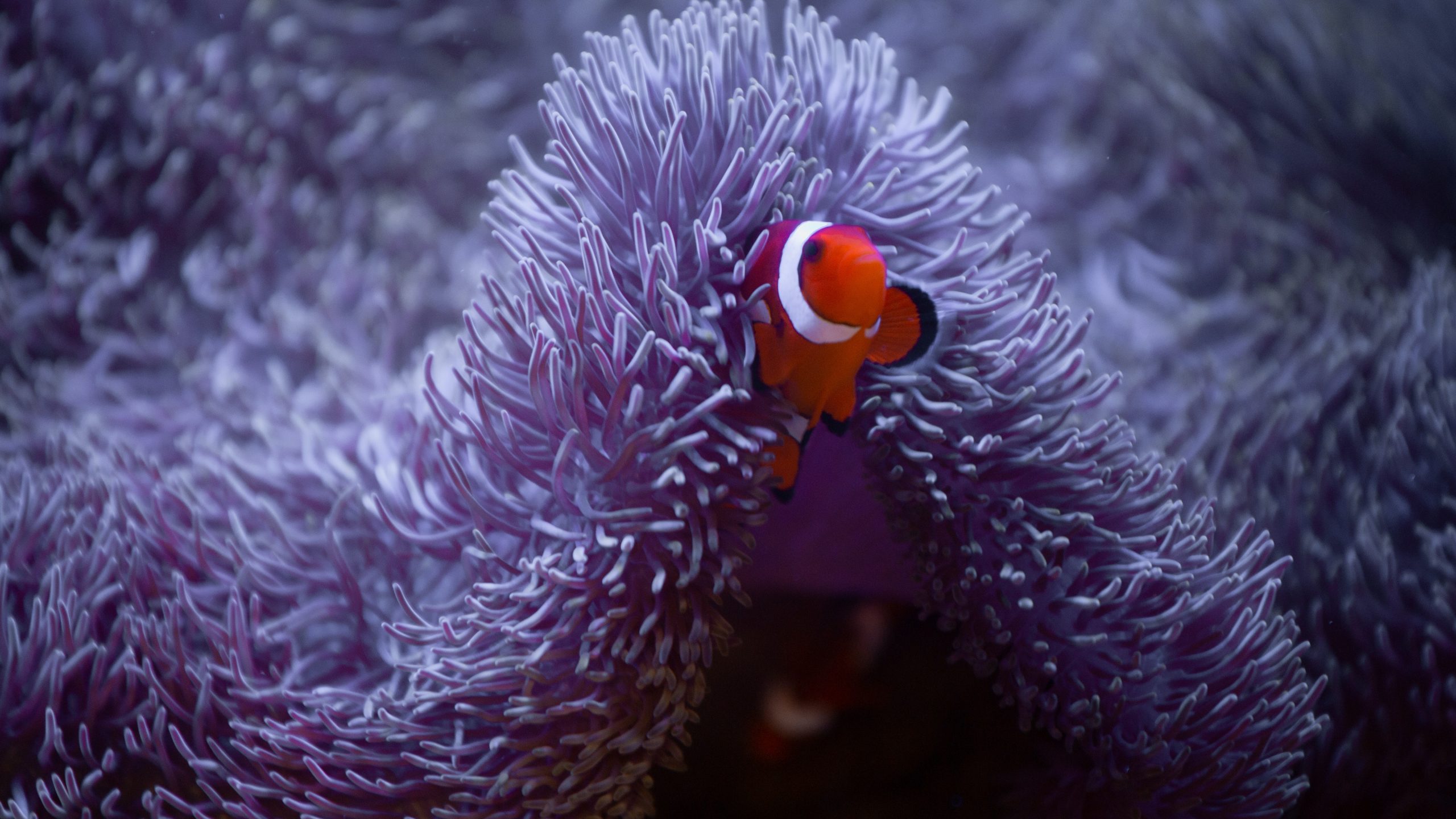
Clownfish or anemonefish are fished from the subfamily Amphiprioninae in the family Pomacentridae. Thirty species are recognized: one in the genus Premnas, while the remaining are in the Amphiprion. In the wild, they all form symbiotic mutualisms with sea anemones.
Clownfish Breeding Steps
- Tank set-up for broodstock
- Water quality maintenance
- Broodstock development and maintenance
- Sex change and pairing
- Pair formation
- Breeding
- Larval rearing
- Juvenile rearing
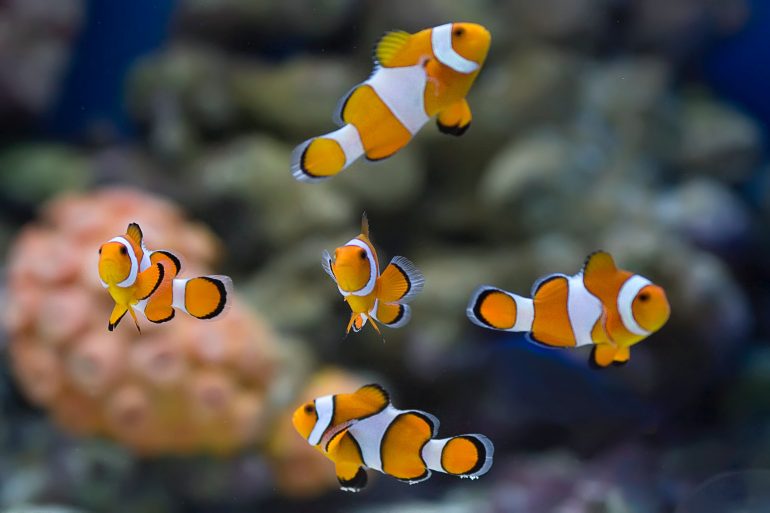
Tank set-up for broodstock
A clownfish broodstock/ spawning tank should be of 250 to 500 L capacity with a single healthy pair and host sea anemone
The tank would be a 3 ft x 2 ft x 2 ft with a layer of coral sand at the bottom, a few live rocks, bright lighting, and good filtration, preferably with an efficient protein skimmer to reduce the ammonia and organic materials in the system.
The brood stock/ spawning tanks should be kept at a place where the fish receive regular day/ night light cycles (moon phase). This is for wild-caught broodstock only
Anemone is generally not required to breed clownfish under captive conditions. But typically, the clown fish select a nest site adjacent to the sea anemone for the deposition of eggs.
Water Test KitWater Quality Maintenance
Maintenance of water quality is the most critical factor for breeding clown fishes or any marine fishes under controlled conditions
Sea water needs to be filtered through a series of filters like Sand/ Biological And UV before being taken to the rearing tanks
Also, Need a protein skimmer to reduce the ammonia and organic materials in the tank system.
The temperature in all the breeding tanks must be maintained between 26 to 30°C
Need to maintain dissolve oxygen between 5 - 7 mg/L range
pH should maintain between 8.0 - 8.5 degree
salinity should maintain between 32 - 35 ppt
Once a week 25% of the water should be exchanged to avoid stress like a rapid increase in plasma cortisol concentration, depression of gonadal steroidogenesis, and subsequent development of gonadal atresia.
Broodstock Development And Maintenance
Feeding with enriched live feeds
After enrichment, the rotifers and artemia were harvested, washed, and released to 4 L of bio-filtered seawater containing a mixed culture of microalgae: N. oculata, P. lutheri, I. galbana, D. inornata, C. pleoides and C. marina (104 to 106 cells/ ml) in 5 L capacity transparent tub with mild aeration. The enriched rotifer and artemia were given in split doses (10-11 am and 3.0 to 4.0 pm daily).
The fish and anemones should be fed twice a day with wet feeds like shrimp, mussel, and clam meat at the rate of 5% of their body weight and live feeds like Brachionus plicatilis, artemia nauplii, and adult artemia
Sex Change And Pairing
As the clown fishes are protandrous (male first) sequential hermaphrodites, a pecking order is established in which the female is dominant, the male is subordinate to the female, and all the other juveniles are subordinate to the adult male and female.
Generally, all clownfish individuals start out as males and change into females when they reach larger sizes or under the situation of loss of a mate. The male and female form a monogamous pair bond that lasts until one member of the pair dies. If the female dies first, the largest male rapidly changes sex into a female and the second largest or dominant juvenile becomes an active male, and that pairs up with the newly transformed female.
By utilizing this adaptation, pairs of clown fishes can be developed under captive conditions by creating social systems. After a period of 3 to 4 months of rearing for pair formation, in each tank, one pair grew ahead of the others and becomes the spawning pair. As the newly formed pairs will be very aggressive and spend time fleeing the other subordinates rather than reproductive activity, it is very essential to stock each breeding pair in separate tanks

Pair Formation
For pair formation, five fishes of each sex of different size groups need to be stocked together along with a host anemone in 500 L FRP tanks fitted with a biological filter to reduce aggression.
Pair formation tanks must be maintained in the hatchery with a light intensity of 2500 to 3000 lux as the anemones require light for survival under laboratory conditions.
Environmental parameters such as temperature (26 to 29ºC), salinity (33 to 35 ppt), dissolved oxygen (5 to 7 mg/L), and pH (8.0 to 8.5) are to be maintained in all rearing tanks.
Breeding
Breeding behaviors
After broodstock rearing, each pair will start breeding within a period of 4 to 6 months under captive conditions.
A few days prior to spawning, the male selects a suitable site near the anemone for egg laying and it clears algae and debris with its mouth on the day of spawning both parents spent considerable time cleaning the site which indicates the imminent at within a few hours
Under laboratory conditions, spawning can be obtained between 0500 h to 1530 hrs. during daytime and it lasts for one to one and a half hours. Each female lays 300 to 1000 capsule-shaped eggs every 12 to 15 days interval
On average two spawning/ lunar months result in an estimated annual fecundity of 7200 to 24000 eggs/ breeding pair/ year under laboratory conditions.
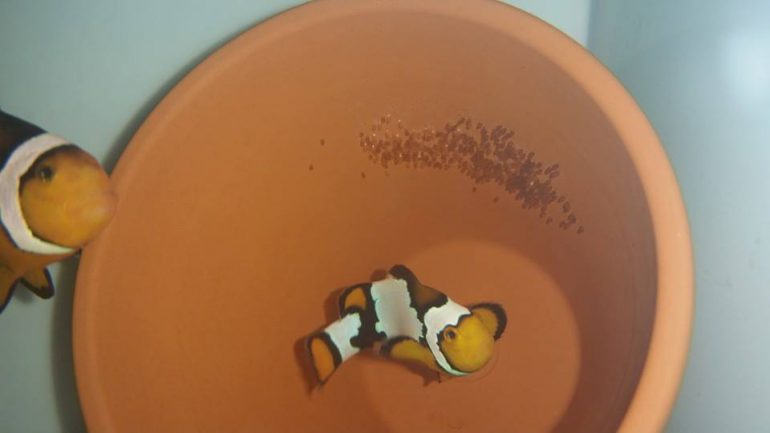
Egg deposition
The clownfish have attached eggs and are known to spawn on rough surfaces near the host anemone (Wild Caught Fish). Hence it is essential to provide suitable substratum preferably tiles or earthen pots or shells of edible oysters or PVC pipes for the egg deposition which will also be helpful for the transfer of deposited egg to the hatching tank without any mechanical injury
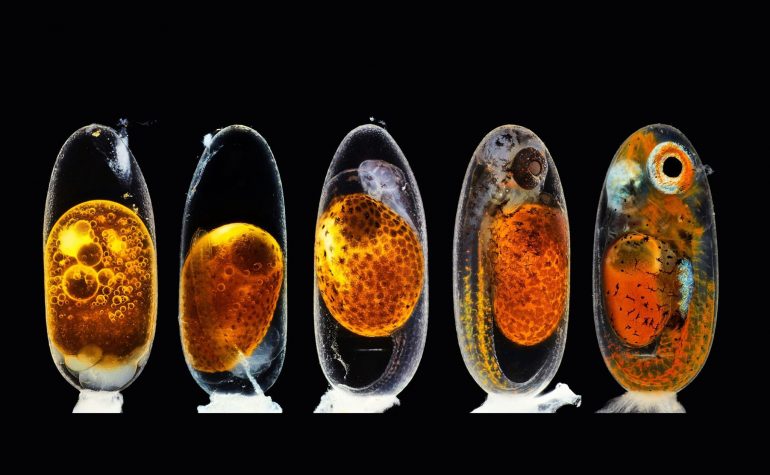
Parental care
As parental care is inevitable for hatching out of the larvae, the parents should be allowed to remain in the tank itself till hatching. During the incubation period, both parents carefully look after the eggs during daytime
Male assumes all the responsibility of caring for the eggs and spent a higher percentage of time at the nest than females, which then increases gradually up to 70% of the time as the day of hatching approaches.
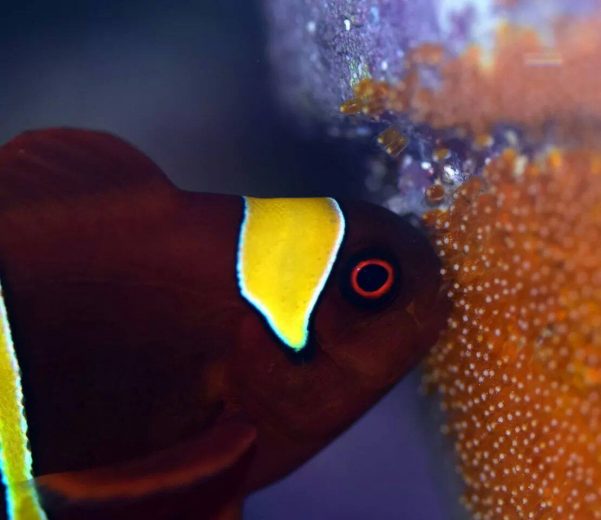
Larval Rearing
Egg Hatching
When incubated at 27 to 29º C, the hatchling emerged on day 8, On the expected day of hatching, two hours before sunset, the eggs along with substratum were transferred from the parental tank to hatching tanks (100 L) and provided with complete darkness for accelerating the hatching.
Feeding
At this stage provision of suitable size and nutritionally adequate enriched feed in high density is important for their survival.
Larvae have only little quantity of yolk material, and it starts feeding within a few hours after hatching
The mouth gape of clownfish larvae is between 80-123 µ, the larvae need to be fed with live feeds measuring less than 100µ for their active feeding
Survival can be significantly made higher when larvae were fed with copepods. The higher omega-3 fatty acids found in copepods appear to be important for the survival of larvae under more stressful conditions.
The feeding schedule of larvae of clown fishes can be performed in two stages: Stage 1: covered the enriched rotifer with algae feeding phase from Day 1 to day 8; Stage 2: the newly hatched enriched artemia and enriched rotifer with algae feeding phase from day 9 to day 20.
In general, the mortality of larvae was reported due to overfeeding, intestinal blockage, ingestion of air bubbles, or bacterial problems. Though Artemia is in regular use for larval rearing of marine fishes, there is one serious concern with introducing unhatched cysts along with the Artemia nauplii to the larval rearing tank and these cysts are often eaten by the larvae and will cause intestinal blockage
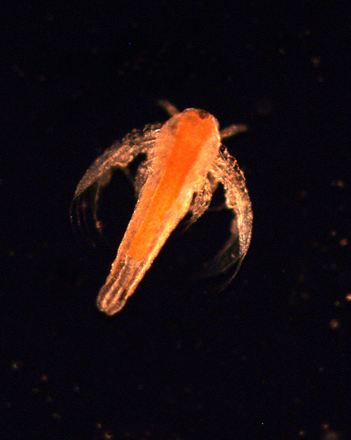
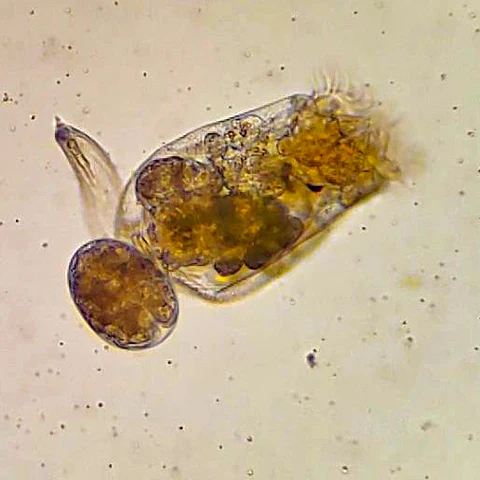
Water quality maintaining
The rearing tanks need to be provided 24 hrs. with light up to 15 days of post-hatch (DPH). During this time, the larval tank must be kept very clean with the bottom siphoned off by removing dead larvae, detritus and feces twice a day from the bottom. Water exchange must be done at a rate of at least 25% daily.
Temperature, DO, PH, Salinity, and filtration system must maintain in required levels
Water Test KitJuvenile Rearing
Feeding
In juvenile rearing, a survival of 100% was obtained through feeding with different wet feeds at the rate of 5% of body weight.
Apart from these, artemia nauplii 10-15 numbers/ ml and rotifer (B. plicatilis) 50- 55 nos./ml were given after enrichment with brown algae (104 cells/ml) and green algae (106 cells/ml) with cod liver and fat-soluble Vitamin A, D, E, K, twice a day which helped to retain the color of fishes and provided adult artemia (2-4 nos/ml).
Through this feeding schedule, the larvae will attain 10 to 12 mm within 30 days of post-hatch and the juveniles reach 25 mm to 35 mm within 60 days and attain marketable size within 6 months after post-hatch.
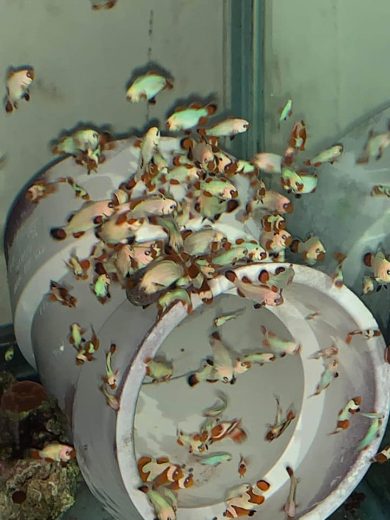
Water Quality maintaining
•Once a week, one-third of the water needs to be decanted and refilled with the same quantity of filtered seawater in all juvenile-rearing tanks
•Temperature, DO, PH, Salinity, and filtration system must maintain in required levels

